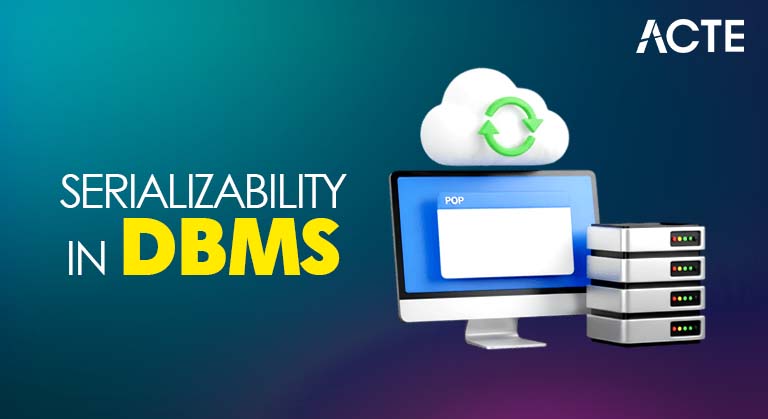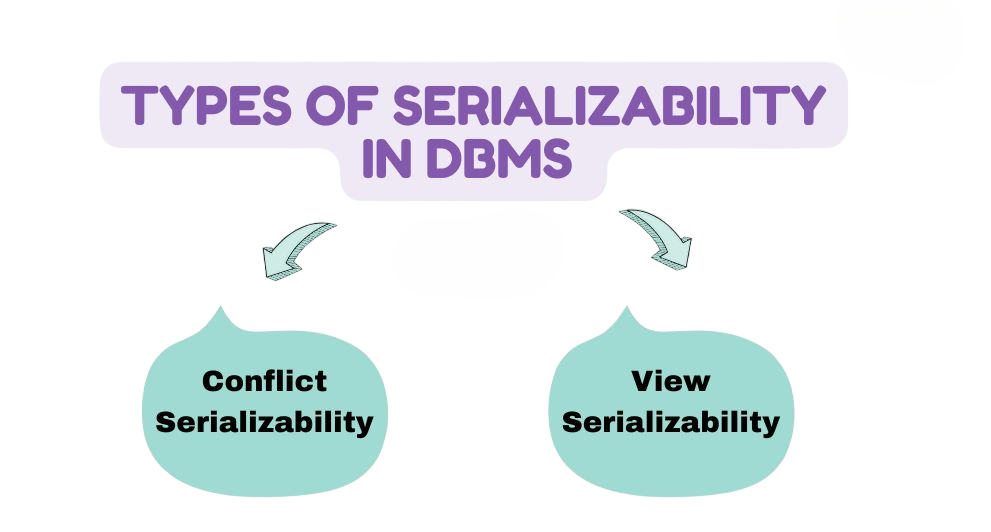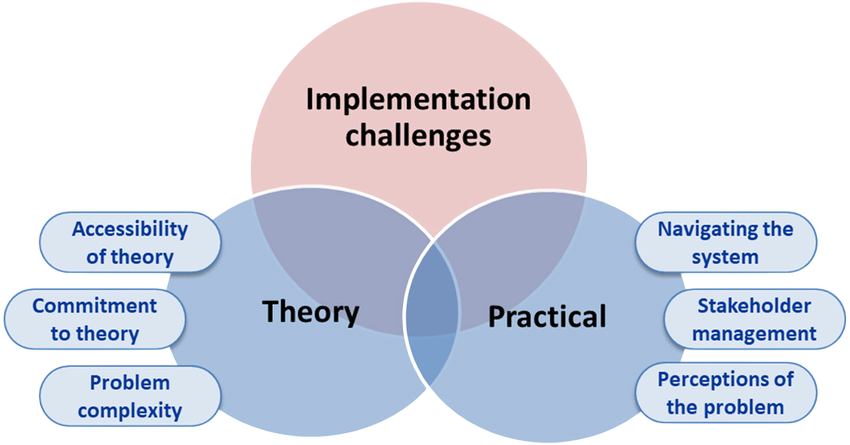
- What is Serializability in DBMS?
- Types of Serializability
- Implementing Serializability in DBMS
- Testing and Ensuring Serializability
- Importance and Applications of Serializability
- Challenges in Implementing Serializability
- Conclusion
What is Serializability in DBMS?
Serializability in DBMS refers to the property of a database management system that guarantees transactions (sequences of database operations that must all succeed or fail as a single unit) are completed in a way that preserves the correctness of the data. In simple terms, it means that even if multiple transactions are happening simultaneously, the system behaves as if each transaction is run one after the other, not concurrently. Serializability ensures that the final outcome of running several transactions together is the same as if they were done one by one, in some order. This is crucial in database management systems (DBMS) because it maintains data accuracy and upholds the ACID properties: Atomicity (all or nothing), Consistency (correctness is preserved), Isolation (transactions do not interfere with each other), and Durability (results persist even after failures) core principles emphasized in Database Training, where learners master SQL, database design, and performance tuning. Understanding ACID compliance is essential for building reliable, secure, and scalable data-driven applications across industries. To understand serializability, it is important to first know the concept of a serial schedule. A serial schedule is a sequence of transactions where each transaction completes before the next one begins. This foundational idea clarifies how transactions should ideally interact in a database system. A serial schedule is easy to understand because it is deterministic, and the execution order of transactions is clear. In a concurrent system, transactions may execute concurrently, leading to potential nondeterminism and data inconsistencies. Serializability ensures concurrent transactions are equivalent to some serial schedule by guaranteeing transactions do not interfere. The results of one transaction should not impact the outcome of another.
To Explore Database in Depth, Check Out Our Comprehensive Database Online Training To Gain Insights From Our Experts!
Types of Serializability
Conflict Serializability: Conflict serializability describes schedules as serializable if there is no conflict between transactions. If two transactions do not conflict, they may execute simultaneously. Conflicts arise when two transactions access the same data item and at least one is a write operation. To determine if a schedule (the sequence in which multiple transactions are ordered to access the database) with multiple, possibly overlapping transactions is conflict-serializable, we use a tool called a priority graph. A priority graph (also called a precedence graph or serialization graph) is a directed graph that visually represents which transactions must occur before others due to their conflicting access to the same data items while such transactional logic is more common in relational systems, understanding how it applies to document-based databases is explored in What is MongoDB and its Queries. This guide introduces MongoDB’s query language, indexing strategies, and data modeling techniques, helping developers manage concurrency, consistency, and performance in distributed NoSQL environments. If transaction T1 modifies data that another transaction T2 reads, there is a dependency between T1 and T2. The priority graph shows these dependencies and helps to determine conflict-serializability. There are two types of conflicts that are important in conflict serializability: read-write conflicts and write-write conflicts. A read-write conflict occurs when one transaction reads a data item while another writes to it. A write-write conflict happens if two transactions attempt to write to the same data item. In study-write conflicts, one transaction writes to an information object at the same time as any other transaction reads from it. The study transaction should wait until the write transaction is complete before it can continue to avoid inconsistency. To avoid inconsistency, one transaction must be aborted or rolled back.

View Serializability: View serializability is a type of serializability in which transactions are considered serializable if they produce the same final outcomes as if they were finished one after another, in some order. This consideration is based only on the logical sequence of what each transaction reads and writes, ignoring the physical order of these actions. In other words, view serializability checks that transactions, when completed, leave the database objects in the same state as if the transactions were executed one at a time, even if the actual steps occurred differently a principle that complements the enforcement of What are Constraints in SQL, where developers learn how rules like PRIMARY KEY, FOREIGN KEY, and CHECK constraints maintain consistency and integrity across concurrent operations. Together, these mechanisms ensure that both logical correctness and data reliability are preserved in multi-transaction environments. Explore associated Interview Questions to crack the pinnacle jobs easily. To ensure view serializability, transactions must maintain a consistent database view. The data accessed by a transaction must match the data that exists at execution. If a transaction reads data that has been changed by another, it should abort to prevent inconsistency. View serializability is much less common than battle serializability; however, it’s widely utilized in a few specialised programs wherein the logical correctness of transactions is more essential than their physical execution.
Timestamp Serializability: In timestamp serializability, each transaction is given a unique timestamp (a number indicating its order of arrival or start). Transactions are designed to be executed in the order of these timestamps, from oldest to newest. If any transaction tries to perform an operation that would violate this order, it must be rolled back and retried. Timestamp serializability provides an efficient way to ensure serializability by allowing transactions to execute concurrently based on their timestamps. Unlike conflict or view serializability, it requires accurate timestamping to prevent inconsistencies, further expanding the methods by which databases can uphold serializability.
Implementing Serializability in DBMS
- Serializability is not just a theoretical concept; it has real significance in database systems. In environments where multiple users and applications interact with the database at the same time, serializability ensures that concurrent transactions do not cause problems like dirty reads, unrepeatable reads, or lost updates concepts that align with Understanding Attributes in DBMS, where learners explore how attributes define the structure, behavior, and constraints of data entities. By designing robust attribute models, developers can enforce transactional integrity and minimize anomalies in multi-user environments. For instance, in banking systems, if one transaction is transferring money while another is checking the balance, running them without serializability could lead to incorrect or inconsistent balance reports.
- Additionally, serializability is the basis for designing strong concurrency control mechanisms used in modern database management systems. It is commonly applied in online transaction processing systems, reservation systems, inventory management systems, and e-commerce platforms, where consistency and correctness are crucial. By enforcing serializable schedules, organizations can ensure data integrity even with high levels of concurrent access, making databases both reliable and trustworthy.
- Deadlocks: Deadlocks occur when multiple transactions wait indefinitely for each other to release resources. For example, if Transaction A locks a file and Transaction B tries to read it, B must wait. If B also locks another resource that A needs, both transactions are stuck in a circular wait a classic deadlock scenario that can be mitigated through efficient query planning and indexing strategies, as outlined in Types Of SQL Indexes. By leveraging clustered and non-clustered indexes, SQL Server minimizes page access and accelerates data retrieval.
- Starvation: Starvation happens when a transaction is perpetually denied access to resources due to other transactions continuously acquiring them. For instance, if a transaction waits for a lock on a file that is constantly updated by others, it may never proceed. Precedence-based scheduling can prevent starvation by prioritizing higher-importance transactions.
- Performance Issues: Performance bottlenecks arise when many transactions compete for the same resources. Serializability mechanisms like locking can slow down processing. Optimistic concurrency control improves performance by allowing transactions to proceed without locks and validating changes before commit. If conflicts are detected, affected transactions are rolled back.
Do You Want to Learn More About Database? Get Info From Our Database Online Training Today!
Testing and Ensuring Serializability
To check if a schedule is conflict serializable, we use the precedence graph, also known as a serialization graph. In this graph, each transaction is a node. Directed edges show conflicts and indicate which transaction must come before another. If the graph has no cycles, the schedule is conflict serializable; if it has cycles, it is not. Database management systems also use various methods to ensure serializability in practice concepts explored in SCM in Software Engineering, where learners examine how transaction scheduling, locking protocols, and concurrency control mechanisms preserve data integrity. Understanding conflict serializability is essential for designing reliable, high-performance database systems that support concurrent operations without compromising consistency. Lock-based protocols like Two-Phase Locking (2PL) stop conflicting operations from running at the same time. Timestamp ordering methods give unique timestamps to transactions to keep them in order. Another method is the validation-based protocol, which checks for serializability during the validation phase before committing a transaction. Ensuring serializability is important because it directly supports the ACID properties of transactions, especially consistency and isolation. These properties guarantee correctness and reliability in multi-user database environments.
Importance and Applications of Serializability
Serializability is not just a theoretical concept; it has real significance in database systems. In environments where multiple users and applications interact with the database at the same time, serializability ensures that concurrent transactions do not cause problems like dirty reads, unrepeatable reads, or lost updates. For instance, in banking systems, if one transaction is transferring money while another is checking the balance, running them without serializability could lead to incorrect or inconsistent balance reports concepts that intersect with distributed data handling in Cassandra Online Training, where learners explore how decentralized architectures, consistency levels, and replication strategies mitigate concurrency issues in real-time applications. Additionally, serializability is the basis for designing strong concurrency control mechanisms used in modern database management systems. It is commonly applied in online transaction processing systems, reservation systems, inventory management systems, and e-commerce platforms, where consistency and correctness are crucial. By enforcing serializable schedules, organizations can ensure data integrity even with high levels of concurrent access, making databases both reliable and trustworthy.
Would You Like to Know More About Database? Sign Up For Our Database Online Training Now!
Challenges in Implementing Serializability

Want to Learn About Database? Explore Our Database Interview Questions and Answers Featuring the Most Frequently Asked Questions in Job Interviews.
Conclusion
Serializability is an important concept in DBMS that ensures record consistency and integrity, allowing multiple customers to access the database concurrently. While its implementation may also present additional challenges, the advantages it offers in terms of record correctness and consistency far outweigh any problems encountered benefits emphasized in Database Training, where learners explore how transactional integrity, normalization, and ACID compliance ensure reliable data operations. Mastering these principles is essential for building robust database systems that support secure, scalable, and error-resistant applications.


